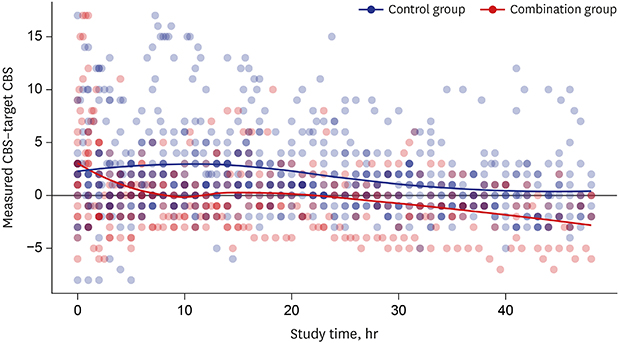1. Kress JP, Hall JB. Sedation in the mechanically ventilated patient. Crit Care Med. 2006; 34(10):2541–2546.


2. Minardi C, Sahillioğlu E, Astuto M, Colombo M, Ingelmo PM. Sedation and analgesia in pediatric intensive care. Curr Drug Targets. 2012; 13(7):936–943.


3. Playfor SD. Analgesia and sedation in critically ill children. Arch Dis Child Educ Pract Ed. 2008; 93(3):87–92.

4. Ancora G, Lago P, Garetti E, Pirelli A, Merazzi D, Mastrocola M, et al. Efficacy and safety of continuous infusion of fentanyl for pain control in preterm newborns on mechanical ventilation. J Pediatr. 2013; 163(3):645–651.e1.


5. Wolf AR, Jackman L. Analgesia and sedation after pediatric cardiac surgery. Paediatr Anaesth. 2011; 21(5):567–576.


6. Tripp DA, Stanish WD, Reardon G, Coady C, Sullivan MJ. Comparing postoperative pain experiences of the adolescent and adult athlete after anterior cruciate ligament surgery. J Athl Train. 2003; 38(2):154–157.


7. Aranda JV, Carlo W, Hummel P, Thomas R, Lehr VT, Anand KJ. Analgesia and sedation during mechanical ventilation in neonates. Clin Ther. 2005; 27(6):877–899.

8. Carbajal R, Eriksson M, Courtois E, Boyle E, Avila-Alvarez A, Andersen RD, et al. Sedation and analgesia practices in neonatal intensive care units (EUROPAIN): results from a prospective cohort study. Lancet Respir Med. 2015; 3(10):796–812.


9. Mehta S, Burry L, Fischer S, Martinez-Motta JC, Hallett D, Bowman D, et al. Canadian survey of the use of sedatives, analgesics, and neuromuscular blocking agents in critically ill patients. Crit Care Med. 2006; 34(2):374–380.


10. Kudchadkar SR, Yaster M, Punjabi NM. Sedation, sleep promotion, and delirium screening practices in the care of mechanically ventilated children: a wake-up call for the pediatric critical care community. Crit Care Med. 2014; 42(7):1592–1600.


11. Playfor S, Jenkins I, Boyles C, Choonara I, Davies G, Haywood T, et al. Consensus guidelines on sedation and analgesia in critically ill children. Intensive Care Med. 2006; 32(8):1125–1136.


12. Ostermann ME, Keenan SP, Seiferling RA, Sibbald WJ. Sedation in the intensive care unit: a systematic review. JAMA. 2000; 283(11):1451–1459.

13. Richman PS, Baram D, Varela M, Glass PS. Sedation during mechanical ventilation: a trial of benzodiazepine and opiate in combination. Crit Care Med. 2006; 34(5):1395–1401.


14. Kleinman ME, Chameides L, Schexnayder SM, Samson RA, Hazinski MF, Atkins DL, et al. Part 14: pediatric advanced life support: 2010 American Heart Association Guidelines for Cardiopulmonary Resuscitation and Emergency Cardiovascular Care. Circulation. 2010; 122(18):Suppl 3. S876–S908.

15. Schwartz GJ, Haycock GB, Edelmann CM Jr, Spitzer A. A simple estimate of glomerular filtration rate in children derived from body length and plasma creatinine. Pediatrics. 1976; 58(2):259–263.

16. Jenkins IA, Playfor SD, Bevan C, Davies G, Wolf AR. Current United Kingdom sedation practice in pediatric intensive care. Paediatr Anaesth. 2007; 17(7):675–683.


17. Ambuel B, Hamlett KW, Marx CM, Blumer JL. Assessing distress in pediatric intensive care environments: the COMFORT scale. J Pediatr Psychol. 1992; 17(1):95–109.


18. Marx CM, Smith PG, Lowrie LH, Hamlett KW, Ambuel B, Yamashita TS, et al. Optimal sedation of mechanically ventilated pediatric critical care patients. Crit Care Med. 1994; 22(1):163–170.


19. van Dijk M, de Boer JB, Koot HM, Tibboel D, Passchier J, Duivenvoorden HJ. The reliability and validity of the COMFORT scale as a postoperative pain instrument in 0 to 3-year-old infants. Pain. 2000; 84(2-3):367–377.


20. Burtin P, Daoud P, Jacqz-Aigrain E, Mussat P, Moriette G. Hypotension with midazolam and fentanyl in the newborn. Lancet. 1991; 337(8756):1545–1546.

21. López J, Botrán M, García A, González R, Solana MJ, Urbano J, et al. Constipation in the critically ill child: frequency and related factors. J Pediatr. 2015; 167(4):857–861.e1.

22. Takemoto CK, Hodding JH, Kraus DM. Pediatric & Neonatal Dosage Handbook. 21st ed. Hudson, OH: Lexi-Comp, Inc.;2014.
24. Anand KJ, Clark AE, Willson DF, Berger J, Meert KL, Zimmerman JJ, et al. Opioid analgesia in mechanically ventilated children: results from the multicenter MOTIF study. Pediatr Crit Care Med. 2013; 14(1):27–36.











 PDF
PDF Citation
Citation Print
Print




 XML Download
XML Download